Has a tyre pressure warning light appeared on your dashboard? The yellow symbol looks like the cross-section of a tyre with an exclamation mark inside. But what does the warning light mean, and what should you do about it?
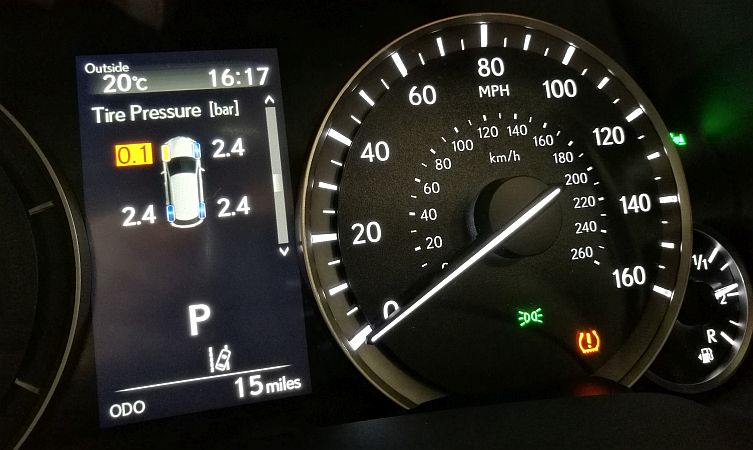
What is the tyre pressure warning light?
The warning light is an alert message to the driver that there may be a loss of air pressure from one or more of the vehicle’s tyres. It comes from the Tyre Pressure Monitoring System (TPMS), an active safety technology that has become a legal requirement for all newly launched and factory updated passenger cars sold in Europe since November 2014.
Tyres represent the only contact your vehicle has with the ground, so maintaining the correct tyre pressure has many safety and efficiency benefits. These include:
- Prevents accidents caused by a critical decrease in tyre pressure
- Helps the vehicle perform predictably
- Saves fuel
- Reduces emissions
- Optimises tyre wear
How does a Tyre Pressure Monitoring System work?
There are two types of TPMS: direct and indirect. Direct systems are installed in all current Lexus models as it is the most accurate method of electronic tyre pressure monitoring. This method uses a battery-powered sensor integrated into the valve assembly (see images below) to physically measure air pressure from within the tyre cavity itself.
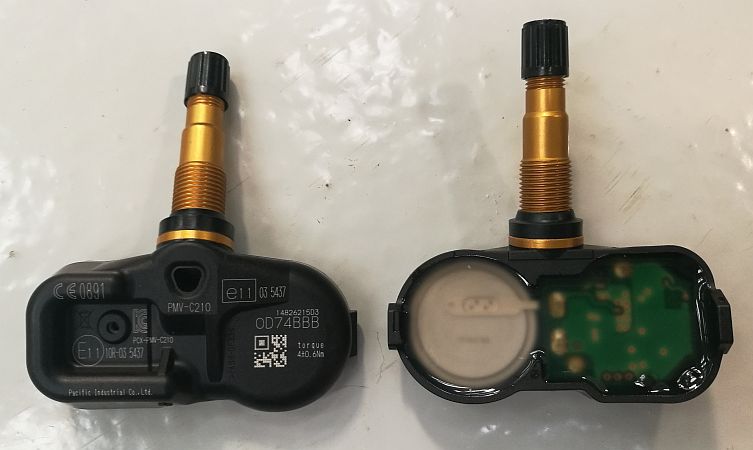
Data from the sensor in each wheel is transmitted wirelessly to a control module connected to the car’s central computer, which prompts a visible alert for the driver if any of the tyres lose pressure. The control module is programmed with the unique serial numbers of the valves within the car’s system, which ensures that the TPMS assembly in each wheel only communicates with its host control module.
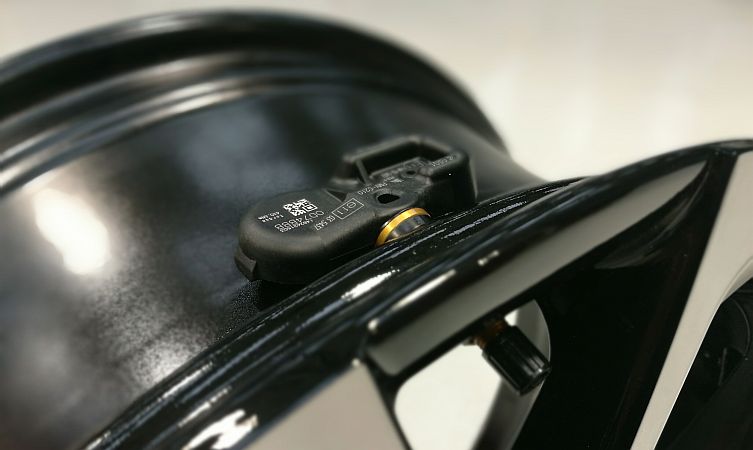
Some vehicles from other manufacturers adopt a more rudimentary indirect method that uses existing wheel speed sensors to ‘measure’ tyre pressure by detecting differences in the rate of wheel rotation. A tyre with less air pressure will have a smaller circumference and therefore spin at a faster rate than a wheel that has not lost air pressure.
What should I do if the tyre pressure warning light comes on?
If the warning symbol illuminates, the air pressure in at least one of your tyres will have dropped below a minimum tolerance level – often a deflation of around 20-25%. This may indicate a leak, puncture, or some other kind of damage.
Dramatic changes in ambient temperature, such as driving from a snow-capped mountain to a warm and sheltered valley, can occasionally cause direct systems to prompt an alert until the temperature has stabilised.
Irrespective of the circumstances, if the TPMS warning light comes on you should pull into a safe area and visually check the tyres. If any appear to be deflated yet undamaged you should try to re-inflate them to the correct pressure and reset the TPMS (see subheading below).
If the tyre has sustained more serious damage, it will be necessary to either continue your journey on the spare wheel, carry out a temporary repair using a tyre repair kit, or call an emergency breakdown service for a lift to a tyre centre.
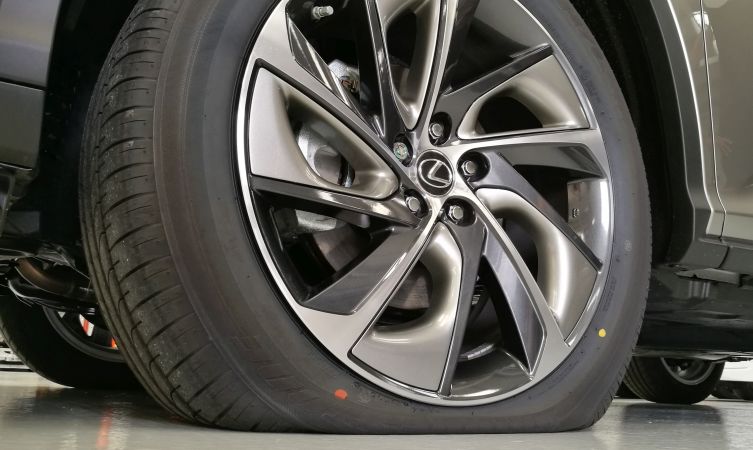
How do I turn off the tyre pressure warning light?
Use the box below to identify how to access the TPMS reset facility in current Lexus models. The majority of models feature reset access within the software menu of the multi-information display in the main instrument cluster. The only exception is the RC F, which uses a physical reset button.
In the case of the RC F, owners simply need to turn the ignition on, then press and hold the TPMS button. The warning light will flash a couple of times and then extinguish, at which point the system has been reset. For systems accessed via a software menu, instructions for resetting the TPMS will be shown within the multi-information display.
| MODEL | RESET ACCESS | LOCATION |
| UX | Software menu | Vehicle Settings menu on multi-information display |
| RZ | Software menu | Vehicle Settings menu on multi-information display |
| NX | Software menu | Vehicle Settings menu on multi-information display |
| ES | Software menu | Vehicle Settings menu on multi-information display |
| RC F | Button | Under dashboard on driver’s side |
| RX | Software menu | Vehicle Settings menu on multi-information display |
| RX L | Software menu | Vehicle Settings menu on multi-information display |
| LC | Software menu | Vehicle Settings menu on multi-information display |
| LS | Software menu | Vehicle Settings menu on multi-information display |
What should happen if I replace any tyres?
The condition and function of the TPMS valve and sensor assembly should be checked each time the tyres are replaced. This will involve a physical inspection and electronic diagnosis using a proprietary technology (example device shown in image below).
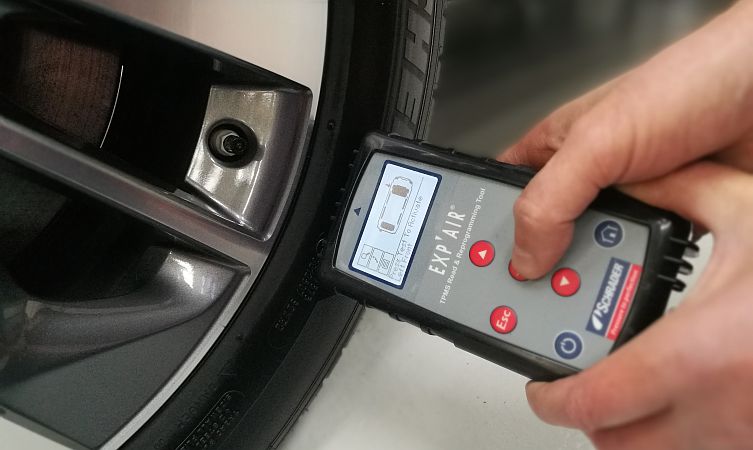
The integrated battery has a life expectancy of around ten years and cannot be replaced. Electronic diagnosis should reveal the health of the battery, which will help you decide whether to replace the entire unit at the same time as the tyre.
Although the main assembly of the valve is robust, parts exposed to the atmosphere can deteriorate over time. So if the battery level is adequate and the main unit is being retained, it would still be wise to have the grommets, washers, collars and cores (see image below) replaced as a matter of course.
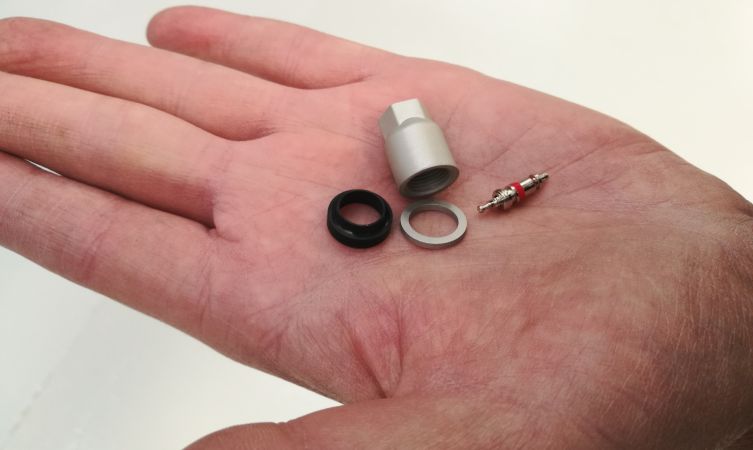
Will changing the wheels affect the TPMS?
Due to the accuracy and complexity of direct measuring, the TPMS control module is designed to recognise and communicate with only one set of wheels at a time. So if you regularly switch wheels (such as changing from summer to winter wheels) it will be necessary for a qualified technician to reprogramme the control module through the vehicle’s OBD port.
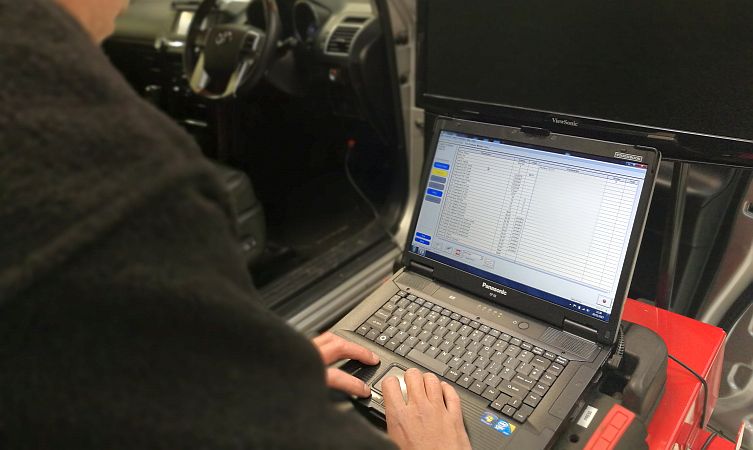
There are occasions when it may be necessary to drive on a wheel that is not equipped with a TPMS valve, such as after a puncture when the spare wheel is fitted. Under such circumstances, the warning light will remain illuminated. The vehicle or tyre monitoring system will not be damaged but the vehicle cannot pass its annual MoT test if the warning light is on.
Do I still have to check my tyres manually?
Although TPMS is designed to deliver a safety alert in the event of a significant loss of tyre pressure, it does not replace manual inspections. Each tyre should be regularly checked to see if it is inflated to the correct air pressure and has sufficient tread depth.
Learn more: Lexus tyre pressure and size guide



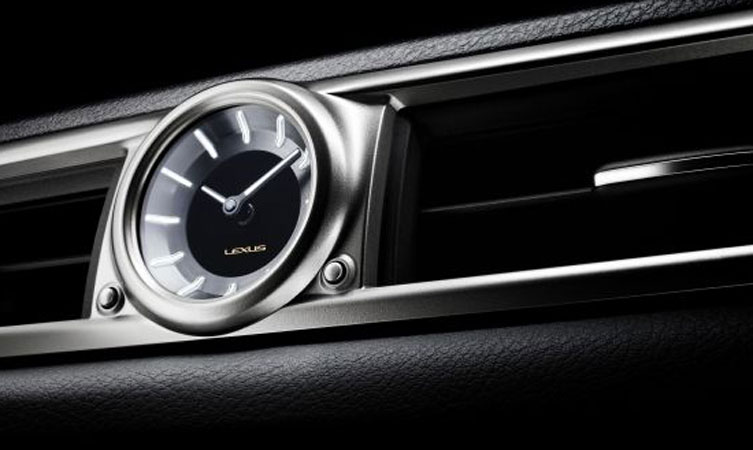

Can you please help on the TPMS on our Lexus NX300
Removing the dust cap from valve it broke but our local Lexus dealer could not fit us in quickly to provide a new one so a local RAC garage purchased one from the local Lexus dealer and got it installed
However, the TPMS on the dashboard remains lit?
We have checked the pressure in each tyre and all are correct, gone through the reset process, run the vehicle and it still remains?
Good afternoon Fran,
Thanks for your query. We would recommend that you visit your local Lexus centre for a thorough reset process.
Find your nearest centre here: https://www.lexus.co.uk/
Kind regards,
Lexus UK
Fran, I have exactly the same problem